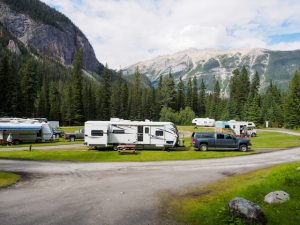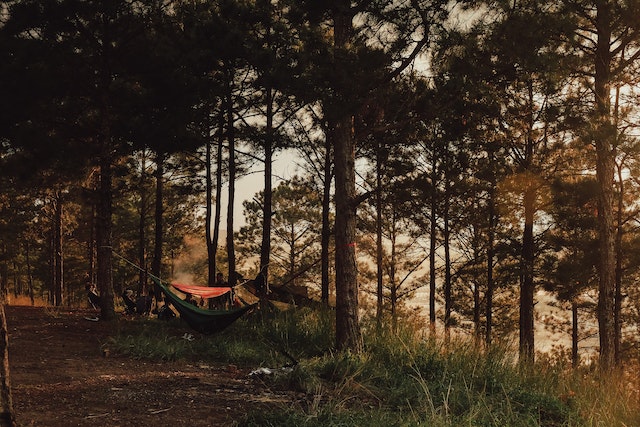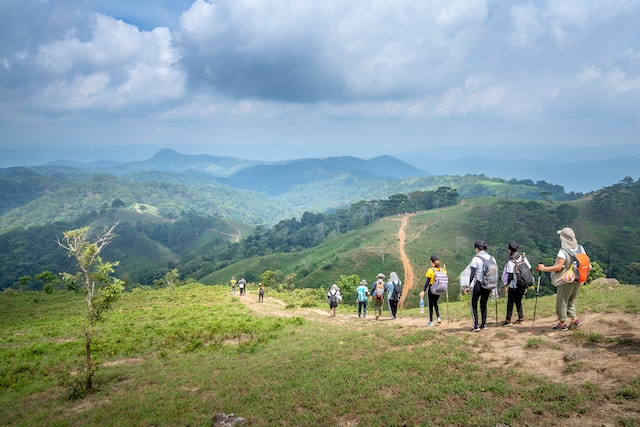Are you ready to embark on a camping adventure in the breathtaking beauty of national parks? Camping in these majestic landscapes is like diving into a vibrant painting, where every brushstroke is a vibrant tree and every color is a symphony of birdsong. In this article, we will provide you with essential tips and advice to ensure your camping experience is nothing short of extraordinary. To start, we’ll guide you on selecting the ideal campsite, where you can find solace and feel at one with nature. Then, we’ll help you gather the necessary gear and equipment, so you can be well-prepared for any outdoor challenge. Planning meals and cooking in the wild is an art we’ll teach you, so you can savor delicious meals under the stars. Your safety is our utmost priority, so we’ll equip you with wildlife awareness and safety precautions.
Lastly, we’ll emphasize the importance of leaving no trace, as we strive to preserve the pristine beauty of national parks for generations to come. Join us on this incredible journey, and let’s create memories that will make you feel like you truly belong within the heart of these majestic national parks.
1. Selecting the Ideal Campsite

When selecting the ideal campsite, it’s important to consider factors such as proximity to water sources and sheltered areas. You want to feel like you belong in nature, surrounded by the peaceful sounds of flowing water and the comfort of a cozy shelter. Look for campsites near rivers, lakes, or streams, where you can enjoy the soothing sounds of water and maybe even go for a refreshing swim. Having access to water also means you won’t have to carry it long distances, making your camping experience more enjoyable.
Sheltered areas are another crucial aspect to consider. Look for campsites that offer natural protection from the elements, such as trees or rock formations. These spots will provide shade during hot summer days and shield you from strong winds or rain. Feeling safe and secure in your campsite will allow you to fully relax and enjoy your surroundings.
Belonging in nature means finding a campsite that suits your needs and preferences. Take the time to explore different options and find the campsite that speaks to you. Remember, nature welcomes everyone, and finding the ideal campsite will make you feel like you are a part of something greater. So go out there, find your perfect spot, and embrace the beauty of camping in national parks.
2. Essential Gear and Equipment
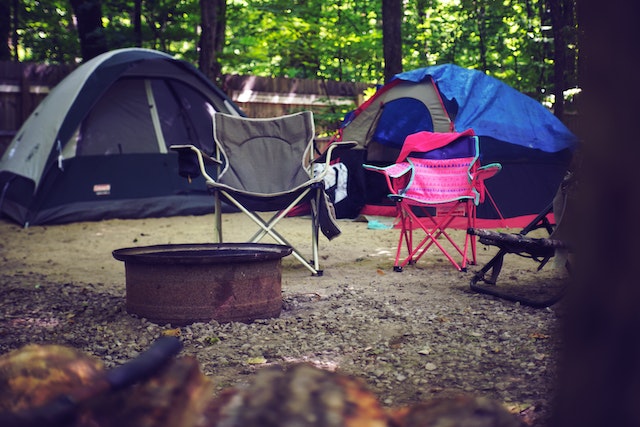
Imagine embarking on a wilderness adventure armed with nothing but your wits and a trusty backpack filled with all the necessary gear and equipment. To ensure a successful and enjoyable camping trip in national parks, it’s essential to have the right gear. Here are five must-have items to bring along:
- A sturdy tent: Choose a tent that’s durable, weather-resistant, and easy to set up. This will be your home away from home in the great outdoors.
- Sleeping bag and sleeping pad: A good night’s sleep is crucial for an adventurous day ahead. Invest in a high-quality sleeping bag that’s suitable for the weather conditions of the national park you’ll be camping in. Don’t forget a comfortable sleeping pad to provide insulation and cushioning.
- Cooking equipment: Cooking delicious meals while camping is a fantastic experience. Pack a portable camping stove, cookware, utensils, and basic ingredients to whip up tasty and nourishing meals.
- Proper clothing and footwear: Dress in layers to adapt to changing weather conditions. Bring waterproof and breathable clothing, sturdy hiking boots, and extra socks to keep your feet dry and comfortable.
- Lighting and navigation tools: Don’t forget to pack a headlamp or flashlight for nighttime visibility. Additionally, bring a compass, map, and GPS device to navigate your way through the wilderness.
With these essential gear and equipment, you’ll be well-prepared to embark on an exciting camping adventure in national parks. So grab your gear, gather your friends, and experience the beauty of nature together. Happy camping!
3. Planning Meals and Cooking
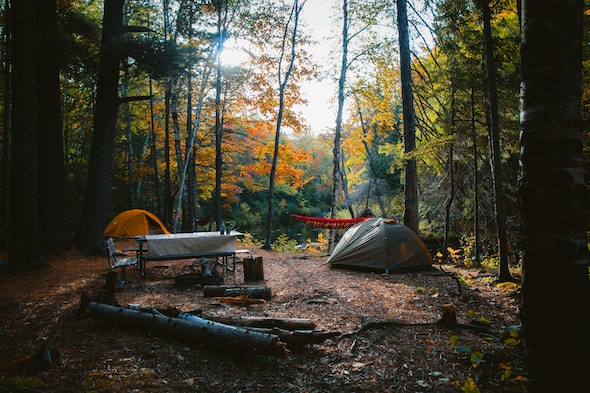
To make the most of your wilderness adventure, don’t forget to plan delicious meals and bring cooking equipment that will satisfy your taste buds and create memories around the campfire. Cooking while camping can be an incredibly enjoyable experience, allowing you to connect with nature, bond with your fellow campers, and indulge in tasty meals.
When planning your meals, it’s essential to consider the ingredients and cooking methods that are convenient for camping. Opt for simple yet flavorful recipes that require minimal preparation and cooking time. Additionally, make sure to pack ingredients that can withstand outdoor conditions, such as canned goods, dried fruits, and vegetables.
To assist you in planning your camping meals, here’s a helpful table that provides ideas for breakfast, lunch, and dinner options:
| Breakfast | Lunch | Dinner |
|---|---|---|
| Pancakes | Sandwiches | Grilled sausages |
| Oatmeal | Wraps | Foil packet meals |
| Breakfast burritos | Salads | Skewered kebabs |
| Fruit salad | Pasta salad | Campfire chili |
Remember to bring essential cooking equipment like a portable stove, camping cookware, utensils, and a cooler to store perishable items. With proper planning and the right equipment, you can enjoy delicious meals while immersing yourself in the beauty of nature.
4. Safety and Wildlife Awareness
While you’re out exploring the wilderness, it’s crucial to stay safe and be aware of the wildlife around you. National parks are home to a diverse range of animals, and encountering them can be an exciting part of your camping experience. However, it’s important to remember that these animals are wild and should be treated with respect.
Follow these tips to ensure your safety and the well-being of the wildlife.
First and foremost, never approach or feed any wild animals. It may seem tempting to get a close-up photo or offer them a snack, but this can be dangerous for both you and the animals. Maintain a safe distance and observe them from afar. Remember, they are not accustomed to human interaction and can become aggressive if they feel threatened.
Additionally, make sure to properly store your food and dispose of waste. This will help prevent attracting wildlife to your campsite. Use bear-proof containers or hang your food from a tree branch, away from your sleeping area. Keep your cooking area clean and dispose of food scraps in designated bins.
Lastly, familiarize yourself with the specific wildlife in the area you are visiting. Learn about their behaviors, habits, and any potential risks they may pose. This knowledge will help you make informed decisions and avoid dangerous situations.
By following these safety guidelines and respecting the wildlife, you can enjoy a memorable camping experience while also preserving the beauty of nature for future generations. Stay safe and have a great time exploring the great outdoors!
5. Leave No Trace Principles
One interesting statistic to consider is that adhering to the Leave No Trace principles can reduce your waste production to just 0.3 pounds per day. That’s a remarkable achievement! By following these principles, you can ensure that you belong to a group of responsible campers who care about preserving the beauty of national parks for future generations.
First and foremost, remember to plan ahead and prepare. This means packing all the necessary equipment and supplies, such as a tent, sleeping bag, and food, while also considering the impact of your choices. Opt for reusable and eco-friendly items, like a water filter instead of single-use bottles. This way, you can minimize waste and contribute to a cleaner environment.
When setting up camp, be mindful of where you pitch your tent. Choose designated camping areas whenever possible, as they are designed to minimize the impact on the surrounding ecosystem. Avoid trampling vegetation and disturbing wildlife habitats. By doing so, you demonstrate your commitment to preserving the natural beauty of the park.
Another crucial aspect of the Leave No Trace principle is properly disposing of waste. Pack out everything you bring in, including trash, food scraps, and human waste. Use designated waste disposal facilities or bring your own disposal bags. This ensures that the park remains clean and free from pollution.
By adhering to the Leave No Trace principles, you become part of a community that values and respects the natural world. Together, we can create a sense of belonging and contribute to the preservation of national parks for future generations to enjoy.
Frequently Asked Questions
Are there any age restrictions for camping in national parks?
There are no age restrictions for camping in national parks. Whether you’re young or old, you can enjoy the beauty of nature and create lasting memories with your loved ones.
Can I bring my pet with me when camping in national parks?
Yes, you can bring your pet with you when camping in national parks. Many parks allow pets but make sure to check the specific park’s regulations and keep your pet on a leash at all times.
What are the rules regarding campfires in national parks?
To keep the fire burning, follow the rules on campfires in national parks. Remember, “where there’s smoke, there’s fire.” By respecting these regulations, you’ll be welcomed into the community of responsible campers.
Are there any restrictions on the use of camping hammocks in national parks?
Yes, there might be restrictions on using camping hammocks in national parks. Check the specific park’s regulations to make sure you can hang your hammock. Always respect the park’s guidelines to maintain harmony and preserve nature.
Can I use my portable generator while camping in national parks?
Yes, you can use your portable generator while camping in national parks. It’s important to follow park regulations and be considerate of fellow campers. Enjoy the convenience and power it provides during your outdoor adventure!
Conclusion
So there you have it, happy camper! You now know all the tips and tricks for camping in national parks. Remember, finding the perfect campsite is as easy as finding a needle in a haystack.
And don’t forget to pack all your essential gear, because who needs a cozy sleeping bag or a reliable flashlight anyway? Planning meals and cooking? Ha! Just throw some raw meat at the wildlife and hope for the best.
And as for safety and wildlife awareness, well, ignorance is bliss, right? Just make sure to leave no trace, except for the trail of destruction you leave behind.

